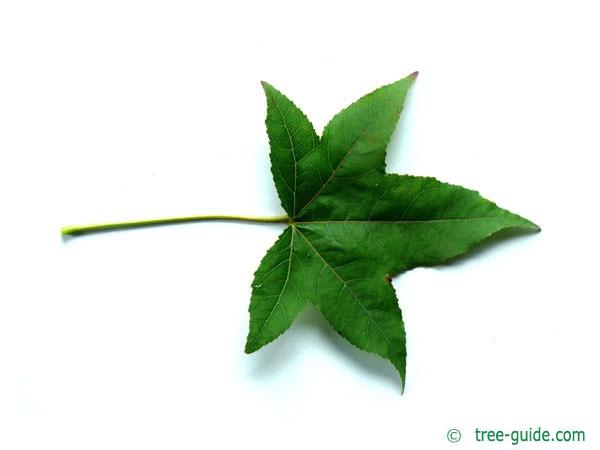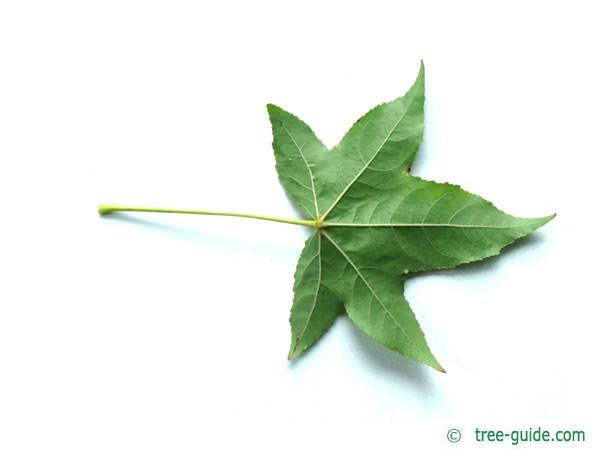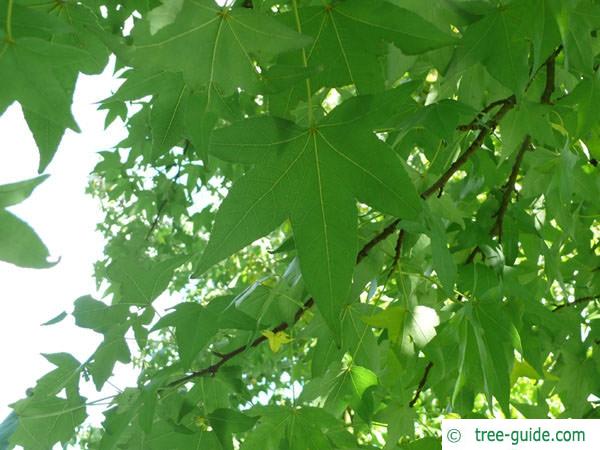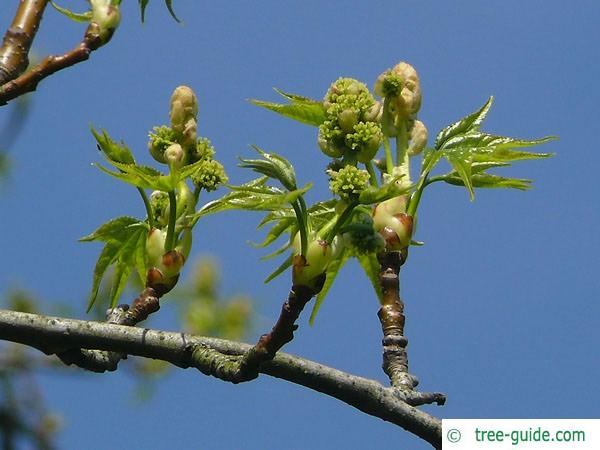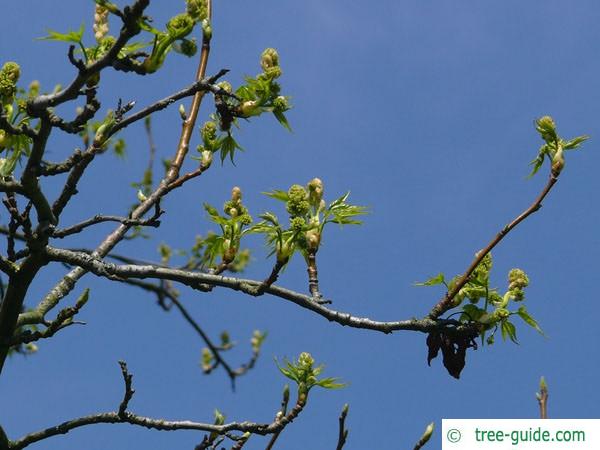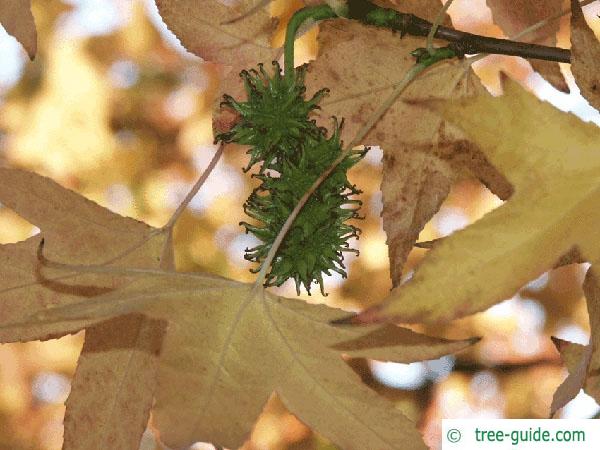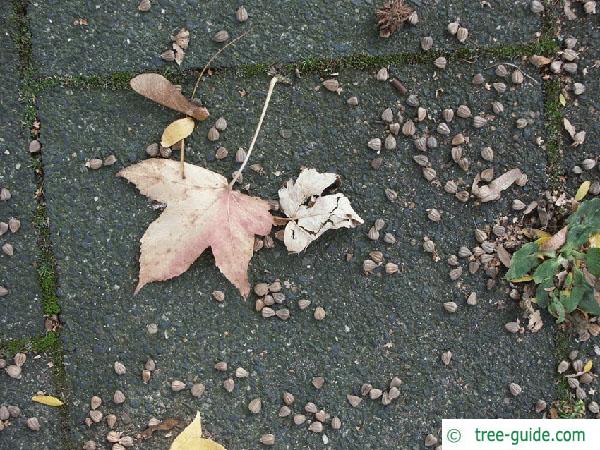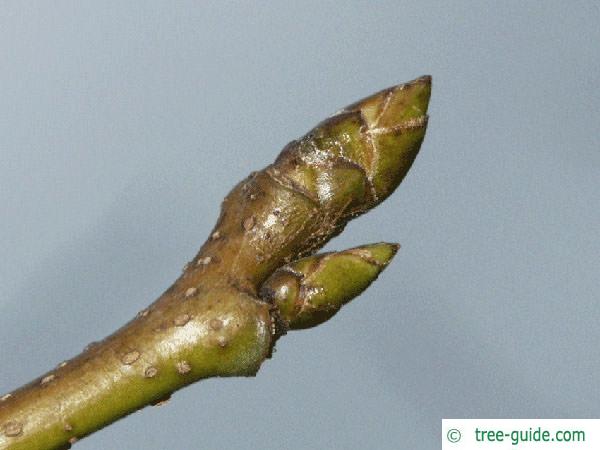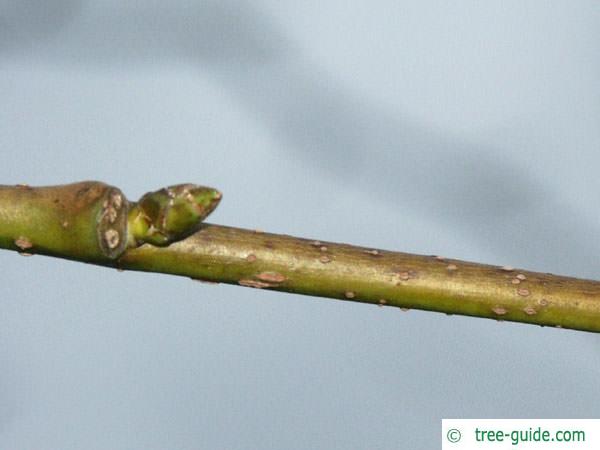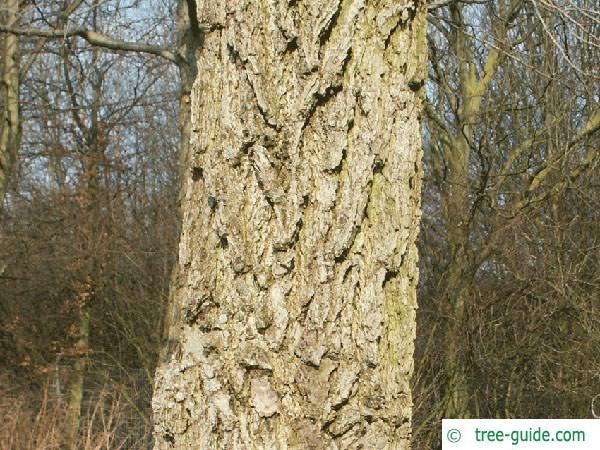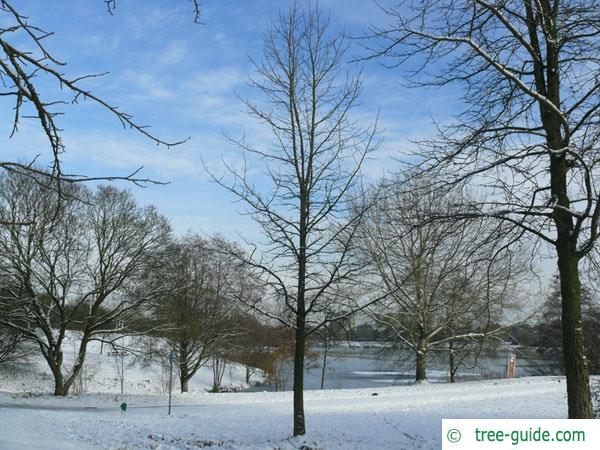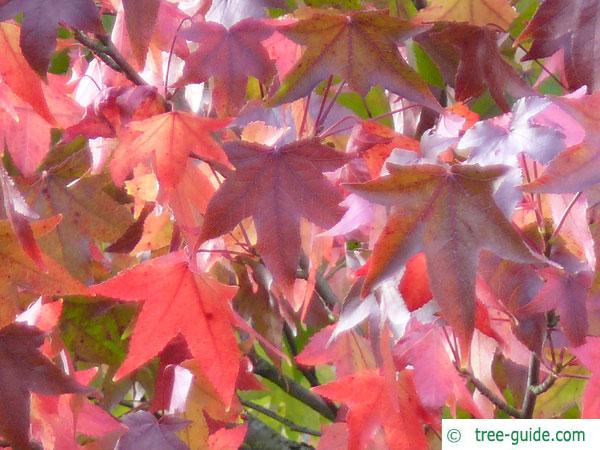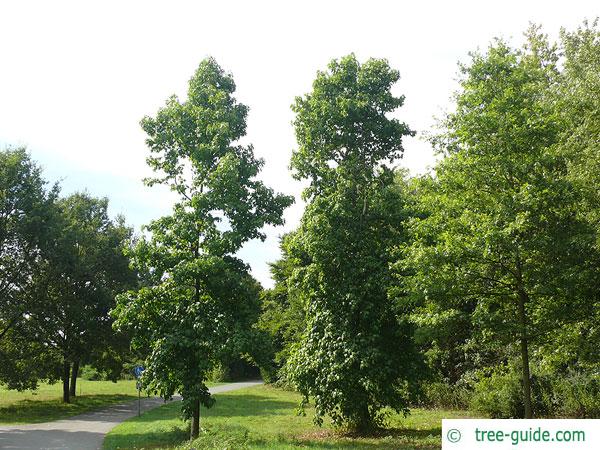Basisdaten
The Sweetgum comes from North America. The resinous sap running from the wounded bark was previously used in chewing gum production. The tree has a slim crown and is also often found in private gardens, because it has beautiful autumn colors.
Tree profile
The leaves of the Sweetgum is hand shaped, lobed with typically five leaf tips. The leaf margin is serrated.
The greenish flowers are inconspicuous, because they are of the same color as the leaves and sprout together.
The fruits are spiky capsule fruits that contain up to 40 capsules. In the autumn the whole ground under the tree is often covered with seeds.
The branches are light brown and often corky.
single tree or planting in groups, parks, urban green







